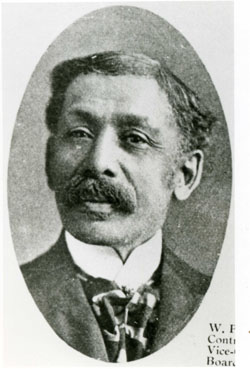Article
Bill Miner
Ezra Allen (Bill) Miner, outlaw (born circa 1847 in Bowling Green, KY; died 2 September 1913 in Covington, GA). Bill Miner was reputed to be the first train robber in Canada, although bandits had robbed a train of the Great Western Railway in Ontario on 13 November 1874, 30 years before Miner arrived in Canada. Miner was the first to rob the Canadian Pacific Railway (CPR) and thus became an outlaw hero in Canadian folklore. Miner was known as “The Grey Fox” and the “Gentleman Bandit” because of his polite manners during holdups. Miner was also credited with being the outlaw who coined the phrase “Hands up!”







